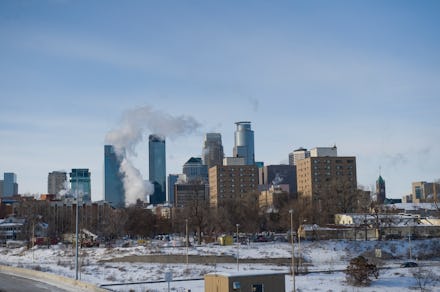Polar Vortex 2016: What it is and how it could make this winter miserable for Americans

Remember that polar vortex in 2014 that dealt much of the United States its coldest winter in 20 years? Well, get ready friends, because it seems the weather phenomenon with the meme-worthy sci-fi moniker is back.
According to meteorologists, brutal cold reminiscent of that January 2014 punisher is due to arrive in the Midwest and Northeast early next week, Reuters reports. Though the lack of snow cover in many places should make for less severe weather than the 2014 cold snap, models predict that temperatures will dip 30 to 50 degrees below normal in some locations by Wednesday morning, according to the Washington Post.
The Midwest could face temperature highs in the single digits, USA Today reports. The vortex will likely weaken as it heads east, though temperatures are still likely to be well below normal levels. How far south the system extends, and for how long the dangerous cold will last, is not yet clear.
What's a polar vortex?
"The polar vortex is a large area of low pressure and cold air surrounding both of the Earth's poles," according to the National Weather Service. It's always there to keep the cold air at the poles, but it can expand in the winter and ride a jet stream south.
The 2014 polar vortex is the freshest in our memory and helped popularize the term, but it was preceded by Arctic blasts in 1977, 1982, 1985 and 1989, the NWS notes.
But it was the brutal cold that greeted us in 2014 — temperatures in some areas were lower than in parts of Siberia and the surface of Mars — that captured our imagination. That blast of severe cold was also blamed for 23 deaths in the U.S.
What to expect
According to the Washington Post, the current polar vortex may not last beyond next week — meaning it may not impact your holiday plans.
But the coming cold poses a significant danger to those at risk, such as the homeless and the elderly.
Earlier this week, a blizzard caused white-out conditions near the Standing Rock Reservation, where #NoDAPL activists remain camped out. Wind chill there has already brought temperatures to a perilous 25 degrees below zero. Tribal leaders seem split as to whether the protesters should remain or pack up for the winter; meanwhile, many protesters have taken refuge from the weather at a nearby casino and resort.